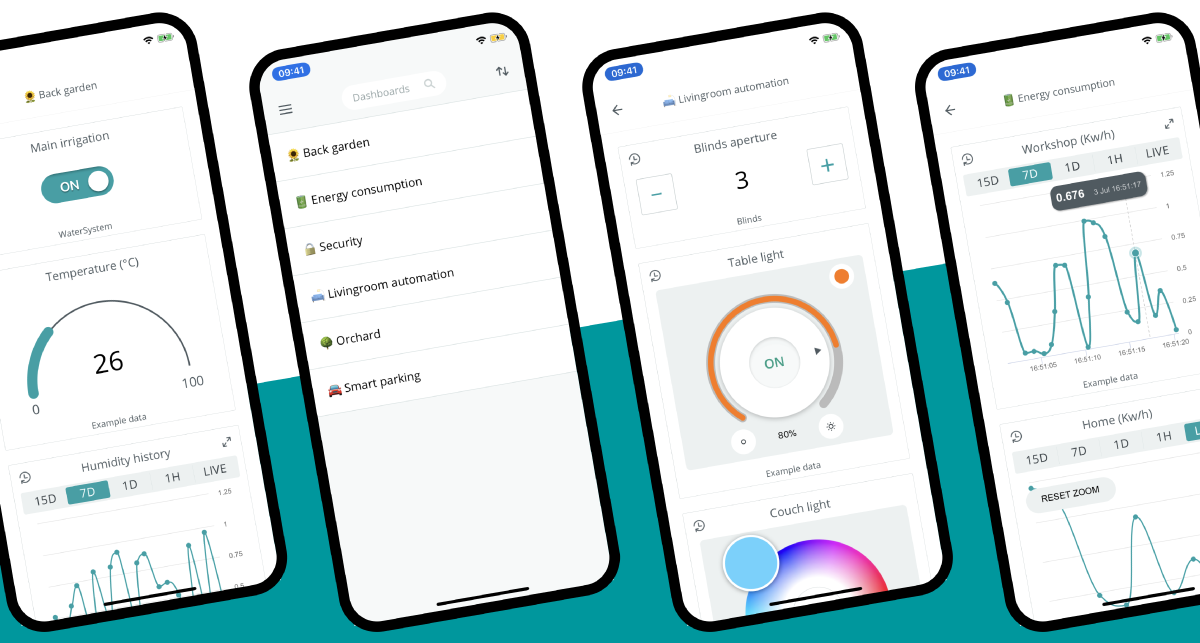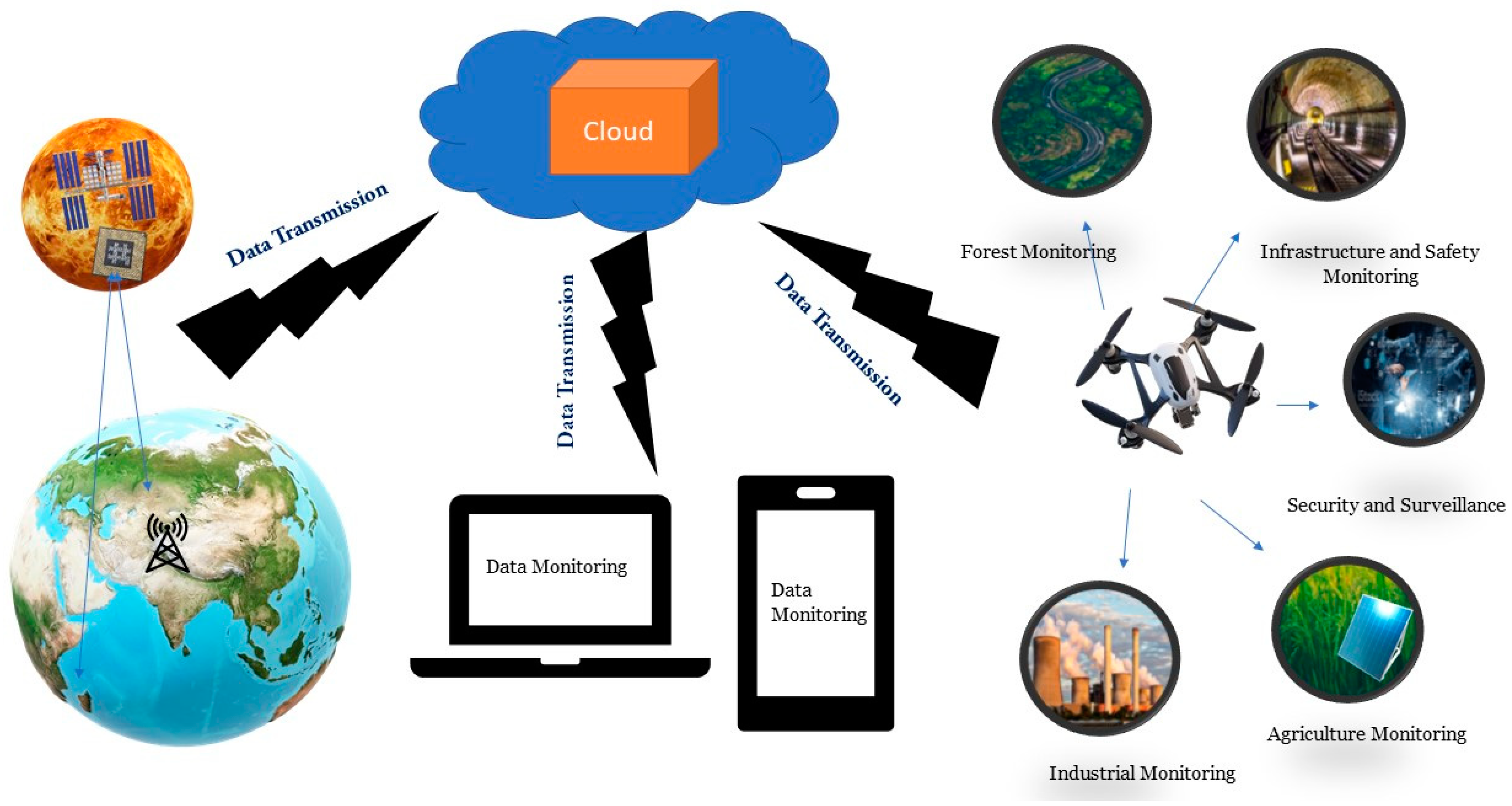RemoteIoT: Manage Millions Of Devices Easily [Applications & More]
Imagine a world where managing countless devices is as simple as a single click. That world is here, and it's powered by remote IoT applications, a revolution that's reshaping industries and redefining possibilities. But how are IoT device useful in the real-world?
The rise of the Internet of Things (IoT) has ushered in an era of unprecedented connectivity, where everyday objects are interwoven into a vast network, communicating and interacting with each other. At the heart of this transformation lies remote IoT, a technology that empowers users to manage, monitor, and control IoT devices from virtually anywhere in the world. This capability has opened doors to innovation across diverse sectors, from healthcare and manufacturing to agriculture and smart cities. The ability to remotely access and manage these devices not only enhances operational efficiency but also drives sustainability efforts and ensures security in increasingly complex environments.
| Category | Information |
|---|---|
| Name | Remote IoT Applications |
| Description | Technology that enables users to manage, monitor, and control IoT devices remotely. |
| Key Features |
|
| Applications |
|
| Benefits |
|
| Reference | Example IoT Solutions |
One of the most significant advantages of remote IoT is its ability to streamline operations. Imagine a manufacturing plant with hundreds of sensors monitoring equipment performance. With a remote IoT platform, engineers can access real-time data from these sensors, identify potential issues before they escalate, and implement corrective measures without physically being on-site. This proactive approach minimizes downtime, reduces maintenance costs, and improves overall productivity. Similarly, in the agricultural sector, farmers can use remote IoT to monitor soil conditions, weather patterns, and crop health. This data-driven approach allows for precise irrigation, fertilization, and pest control, optimizing yields and minimizing resource waste.
Remote monitoring of GPU performance, particularly for applications utilizing Jetson devices, is another critical area where remote IoT shines. The ability for users to remotely and conveniently monitor the various performances of the GPU is invaluable. Jetson devices, known for their powerful processing capabilities, are often deployed in edge computing scenarios, where real-time data analysis is essential. Remote IoT tools enable administrators to track GPU utilization, temperature, and other key metrics, ensuring that these devices operate optimally and efficiently. This is particularly useful in applications such as autonomous vehicles, robotics, and video analytics, where performance bottlenecks can have significant consequences.
Beyond operational efficiency, remote IoT plays a crucial role in enhancing security. IoT devices, often deployed in remote or unattended locations, are vulnerable to unauthorized access and cyberattacks. Remote IoT platforms address this challenge by integrating with existing firewall systems to provide an additional layer of protection. This ensures that IoT devices remain secure, even in the most challenging environments. For example, in smart city deployments, where thousands of sensors and actuators are interconnected, a robust security framework is essential to protect critical infrastructure and sensitive data. Remote IoT platforms offer features such as intrusion detection, anomaly detection, and secure remote access, mitigating the risk of cyber threats.
Furthermore, remote IoT facilitates better understanding and management of the environment, supporting efforts toward sustainability. By collecting and analyzing data from environmental sensors, organizations can gain insights into air quality, water levels, and other key environmental indicators. This information can be used to develop strategies for reducing pollution, conserving resources, and mitigating the impact of climate change. For example, in environmental monitoring applications, remote IoT devices can be deployed to track air pollution levels in urban areas. The data collected can be used to identify pollution hotspots, assess the effectiveness of emission control measures, and inform public health advisories. Similarly, in water management applications, remote IoT sensors can monitor water levels in rivers, lakes, and reservoirs, providing early warnings of droughts or floods.
- Nadia Nyce Heie Fakten Videos Entdecke Mehr
- Hdhub4u Bollywood Filme Mehr In Hd Streamen Legal Alternativen
The versatility of remote IoT extends to healthcare, where it is transforming patient monitoring and improving healthcare delivery. Wearable health devices, equipped with IoT capabilities, allow for continuous tracking of health parameters such as heart rate, blood pressure, and glucose levels. This data can be transmitted to healthcare providers in real-time, enabling them to monitor patients remotely and intervene proactively when necessary. Remote patient monitoring (RPM) systems are particularly beneficial for patients with chronic conditions, such as diabetes, heart disease, and respiratory illnesses. These systems empower patients to take control of their health, reduce the need for frequent hospital visits, and improve overall quality of life. Research indicates that a significant percentage of healthcare organizations and patients are interested in adopting remote patient monitoring systems as part of their healthcare regimen.
Remote access to Raspberry Pi devices is another powerful application of remote IoT. A Raspberry Pi, a small and affordable computer, is often used in IoT projects for data collection, processing, and control. Remote access allows users to manage and monitor these devices from anywhere in the world, enhancing the functionality and flexibility of IoT projects. To enable remote access, users can set up a VNC (Virtual Network Computing) server on the Raspberry Pi and use a VNC client application on a device of choice to view and interact with the Pi's desktop. This allows for remote configuration, software updates, and troubleshooting, making it easier to manage IoT devices deployed in remote locations. Whether one is a hobbyist or a professional developer, understanding how to set up remote access can significantly enhance the project's functionality and efficiency.
The potential of IoT devices, systems, and apps is essentially unlimited, ranging from edge computing and AI to smart cities and smart farming. Edge computing nodes act as core elements, coordinating the flow of data and processing tasks closer to the source. In the context of smart cities, IoT devices can monitor traffic flow, optimize energy consumption, and enhance public safety. In smart farming, IoT sensors can monitor soil conditions, weather patterns, and crop health, enabling farmers to make data-driven decisions that improve yields and reduce waste. The integration of AI with IoT further enhances the capabilities of these systems, enabling them to learn, adapt, and make autonomous decisions.
The applications of IoT span across numerous industries, driving innovation and enhancing operational efficiency. Modern sensors, with advanced techniques such as artificial intelligence (AI), play a significant role in remote sensing and smart agriculture. AI-enabled sensors function as smart sensors, providing additional insights and capabilities. These sensors find wide usage in robotics, navigation, automation, remote sensing, underwater imaging, and more. The critical elements in IoT applications are both the wireless sensor nodes (WSN) and the wireless sensor networks, which enable communication and data exchange between devices. Today, maintaining an internet connection is indispensable for these applications, ensuring seamless connectivity and real-time data transmission.
In summary, remote IoT is a transformative technology that is reshaping industries and enhancing our daily lives. From streamlining operations and improving security to supporting sustainability efforts and transforming healthcare, the applications of remote IoT are vast and varied. As the Internet of Things continues to evolve, remote IoT will play an increasingly important role in enabling innovation, driving efficiency, and improving the quality of life for people around the world. The ability to manage, monitor, and control IoT devices remotely is no longer a luxury, but a necessity for organizations seeking to thrive in the digital age. Whether you are a business leader, a technology professional, or a consumer, understanding the potential of remote IoT is essential for navigating the future of connectivity.
As an example, one can refer to IoT applications that can be found in fields such as environmental monitoring, smart manufacturing, healthcare, smart buildings, smart homes, transportation, energy, and others. In fact, these applications help one understand, predict, and respond to individual needs. The transformative IoT applications include wearable health devices, which, equipped with IoT capabilities, have significantly transformed patient monitoring by allowing continuous tracking of health parameters such as heart rate, blood pressure, and glucose levels.
Online remote monitoring through remote IoT applications is a necessity in various fields where manpower is deployed to check processes in time intervals. Remote IoT integrates with existing firewall systems to provide an additional layer of protection against unauthorized access. This ensures that IoT devices remain secure, even in the most challenging environments. Well, a remote management IoT platform is the answer, and it's called remote IoT. The remote IoT platform allows users to remotely control IoT devices using a web browser.
The 2020 analysis of the top IoT application areas shows that of the 1,414 public enterprise IoT projects identified, manufacturing/industrial settings are most common (22%), followed by transportation/mobility (15%) and energy IoT projects (14%). For reference, see the IoT Analytics IoT applications analysis 2015 here and the 2018 analysis here.
- Filmyfly Filme Amp Suchtipps Keine Ergebnisse Neue Suche
- Maichan 3070 Erome Was Sie Wissen Sollten 2024

What Is Remote Monitoring Iot Enabled Remote Monitori vrogue.co

Arduino IoT Cloud Remote App Monitor and Control Your IoT solutions from Anywhere Electronics

Advances in IoT and Smart Sensors for Remote Sensing and Agriculture Applications